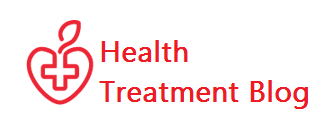Warts can be unsightly and bothersome skin growths that can appear on various parts of the body. Understanding 疣 and looking into efficient wart removal methods are crucial if you are dealing with them. We’ll talk about the numerous kinds of warts, their causes, symptoms, and available treatments in this post.
What are Warts?
Warts are small, rough growths on the skin caused by viral infections. The raised, cauliflower-like growth that appears on the fingers, hands, and knees is the most typical sort of wart. Warts normally have the same colour as the surrounding skin, though they occasionally differ in hue.
Types of Warts:
There are various varieties of warts, and each has unique qualities. The most typical varieties include:
1. Common Warts:
Common warts usually appear on the hands, fingers, and elbows. They have a rough surface and are dome-shaped. Common warts may have tiny black dots, which are often mistaken for “wart seeds,” but are actually small blood vessels.
2. Plantar Warts:
Plantar warts occur on the soles of the feet. They can be painful due to the pressure applied while walking or standing. Plantar warts often have a callus-like appearance with tiny black dots in the center.
3. Flat Warts:
Flat warts are smoother and smaller compared to common warts. On the face, neck, and legs in particular, they frequently manifest in great numbers. Pink, light brown, or yellow are the possible colours for flat warts.
4. Filiform Warts:
Filiform warts have a thread-like or finger-like shape. They often appear on the face, particularly around the mouth, nose, and eyes. Filiform warts are flesh-colored and can grow rapidly.
Causes of Warts:
Warts are caused by the human papillomavirus (HPV), which enters the body through cuts, scratches, or weakened skin. Certain factors can increase the risk of developing warts, including:
- Direct contact with an infected person’s wart
- Walking barefoot in public places like swimming pools or locker rooms
- Weakened immune system
- Personal factors like age and overall health
Symptoms of Warts:
Warts are usually painless unless they occur on weight-bearing areas like the soles of the feet. Common symptoms include:
- Raised or flat growths on the skin
- Rough or grainy texture
- Discoloration of the skin
- Tiny black dots (blood vessels)
- Itching or tenderness (in some cases)
Home Remedies for Wart Removal:
If you prefer to try home remedies before seeking professional treatment, several options may help in 脫疣. These include:
Apple Cider Vinegar:
Apple cider vinegar is believed to have antiviral properties. It can be applied to the wart using a cotton ball or soaked in a small piece of cloth. The area is then covered with a bandage overnight. Regular application may help remove the wart.
Tea Tree Oil:
Tea tree oil has antimicrobial properties and may help in wart removal. Apply a few drops of tea tree oil directly to the wart and cover it with a bandage. Repeat this process daily until the wart disappears.
Garlic:
Garlic contains compounds with antiviral properties. Crush a garlic clove and apply the juice directly to the wart. Cover it with a bandage and repeat this process daily.
Banana Peel:
Rubbing the inside of a banana peel on the wart daily is believed to help remove it. This remedy may take several weeks to show results.
Over-the-Counter Wart Treatments:
If home remedies do not provide satisfactory results, several over-the-counter wart treatments are available. These include:
Cryotherapy:
Cryotherapy involves freezing the wart with liquid nitrogen. The freezing causes a blister to form beneath the wart, and both the blister and the wart eventually fall off.
Salicylic Acid-Based Products:
Salicylic acid-based products, available as gels, liquids, or adhesive pads, can be used to remove warts. They work by gradually breaking down the skin cells of the wart.
Wart Remover Pads:
Wart remover pads often contain salicylic acid or other active ingredients. The pads are applied directly to the wart and left in place for a specific period, gradually removing the wart.
Cantharidin:
Cantharidin is a substance derived from the blister beetle. It is applied to the wart by a healthcare professional, causing a blister to form beneath the wart. The wart and blister are then removed.
Medical Treatments for Wart Removal:
If home remedies and over-the-counter treatments are not effective, healthcare professionals can provide medical treatments for wart removal. These include:
Cryotherapy:
In a medical setting, cryotherapy is performed using liquid nitrogen. The healthcare professional freezes the wart, causing it to fall off.
Electrosurgery and Curettage:
Electrosurgery involves burning the wart with an electric current, while curettage involves cutting or scraping off the wart using a sharp instrument.
Laser Surgery:
Laser surgery uses focused laser beams to remove warts. It is often used for larger or more resistant warts.
Immunotherapy:
Immunotherapy involves stimulating the immune system to fight the wart. This can be done by injecting substances like interferon or applying a solution of squaric acid dibutyl ester (SADBE) or diphencyprone (DPCP) to the wart.
Preventing Wart Infections:
While it is not always possible to prevent warts entirely, you can take certain precautions to reduce the risk of infection. These include:
- Practicing good hygiene, such as washing hands regularly
- Avoiding direct contact with warts
- Not sharing personal items like towels or razors
- Boosting your immune system through a healthy diet, regular exercise, and adequate sleep
When to Consult a Healthcare Professional:
You should consult a healthcare professional if:
- Home remedies and over-the-counter treatments do not work
- The wart is causing significant pain or discomfort
- The wart is bleeding, changing in appearance, or spreading rapidly
- You have a weakened immune system or diabetes
A healthcare professional can provide appropriate diagnosis and recommend the best treatment options for your specific case.

